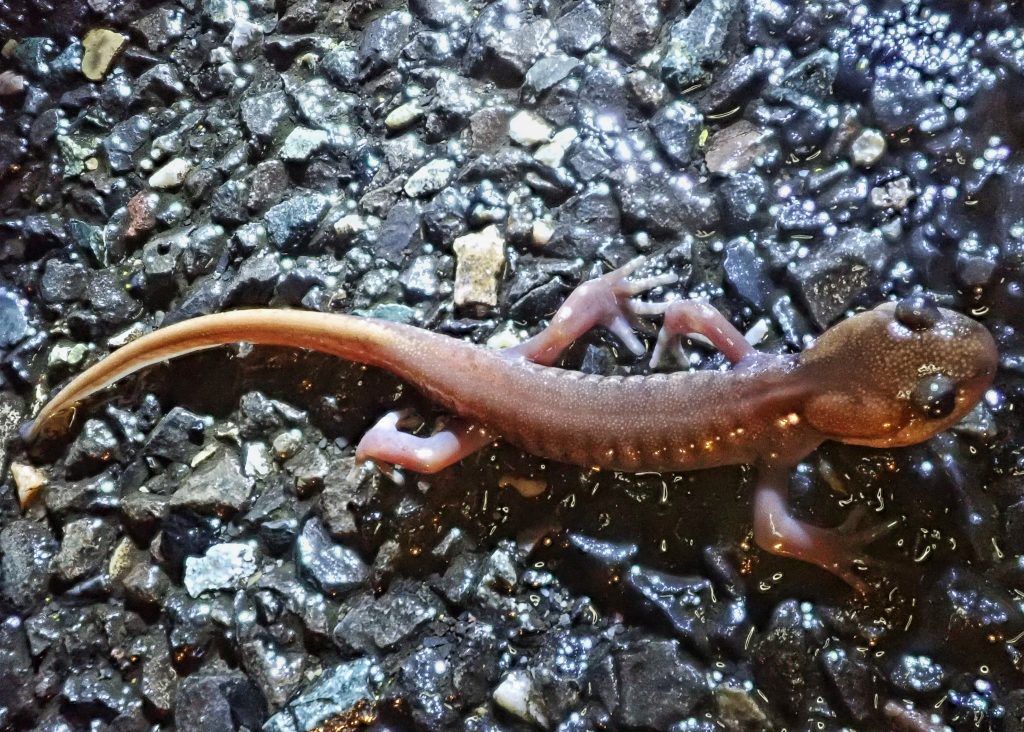
At least once a year in late winter, preferably on a rainy night after a cold spell, my friend Craig Sondergaard and I go night riding for amphibians. This consists of driving very slowly down (hopefully) deserted roads, searching for critters in the headlights. Besides the target class we often see moths and various mammals, most often voles, mice and shrews. And once we had an owl swoop through our tunnel of vision, but it was gone too quickly for identification.
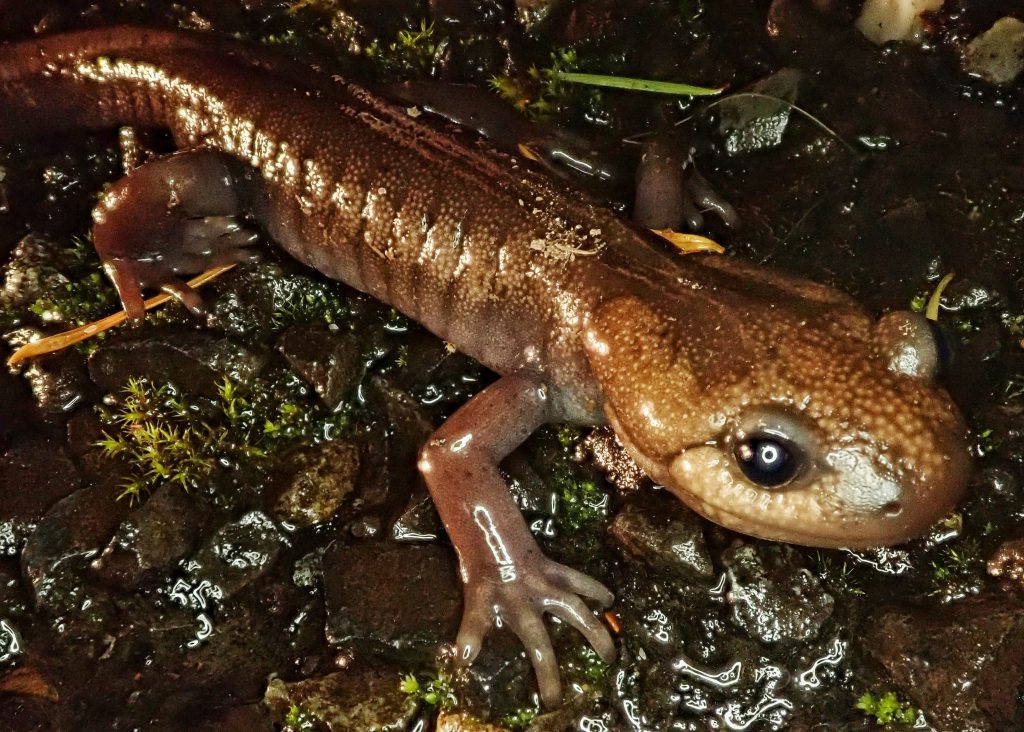
Late winter is chosen because that is the time that many amphibians, including this mole salamander (family Ambystomatidae) Ambystoma gracile, engage in cross country migrations to the bodies of water in which they breed. And, on nights that are wet enough, terrestrial salamanders such as Ensatina and members of Plethodon also can be encountered, although they are just roaming in search of food or mating, and are not migrating to a pond.
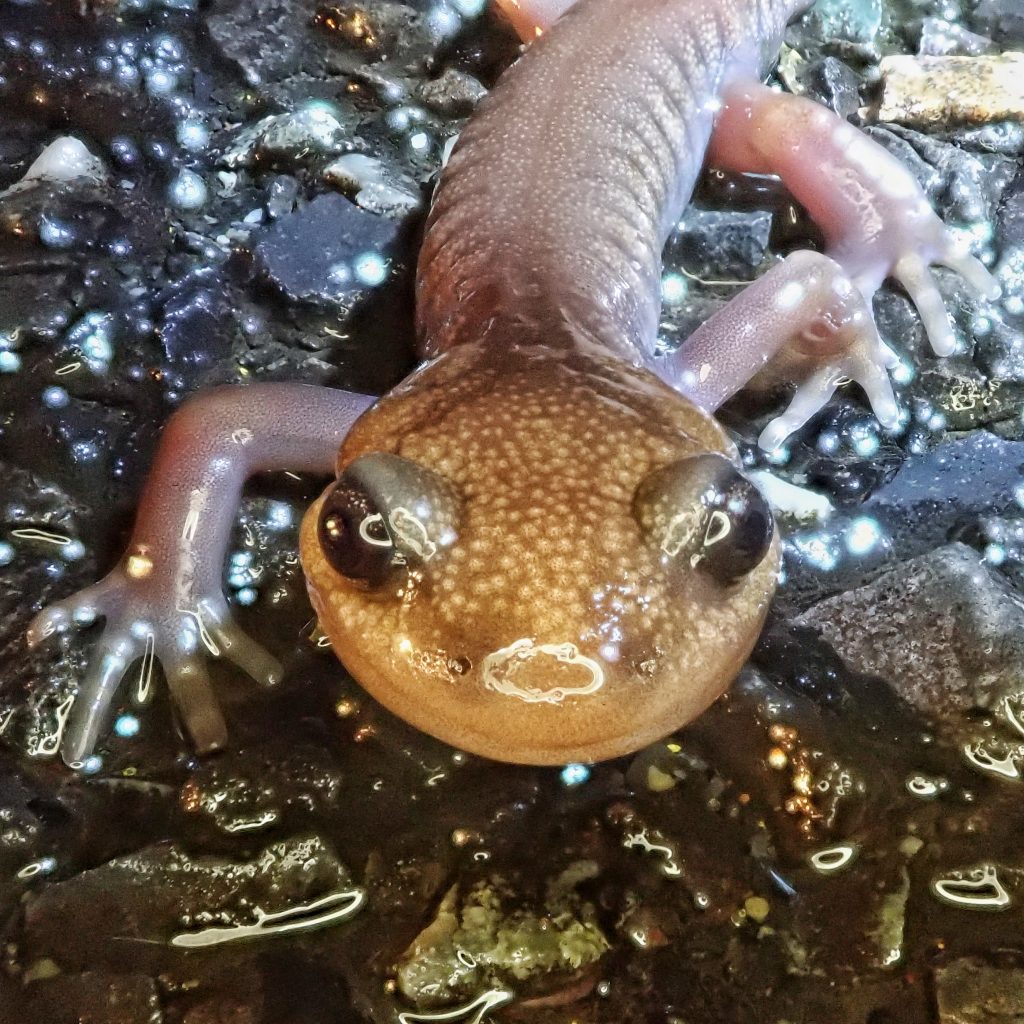
Our chosen evening had a forecast for rain, after a day that was supposed to be wet, but the National Weather Service whiffed on it. Brief showers in the late afternoon were followed by an evening where wipers were not necessary. But we did see a few chorus frogs, and a nice Northwestern Salamander so early in the trip that my head wasn’t in the game and only Craig’s alertness kept me from running it over.
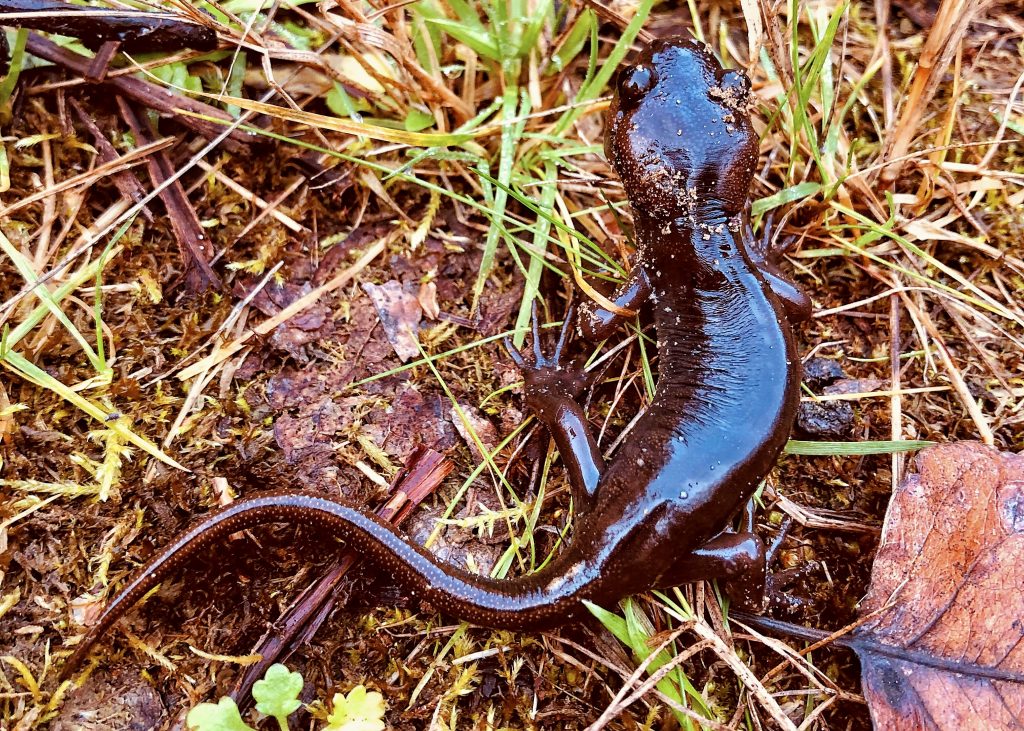
Northwestern Salamanders have terrestrial adults, and neotenic adults which don’t undergo a complete metamorphosis, retaining their gills and staying aquatic. Those are called paedomorphs. This appears to be correlated to altitude, with lowland and mid elevation individuals almost all becoming terrestrial, and upper elevation adults almost all aquatic. Nobody is sure why this is, but the supposition is that the aquatic environment is more stable, and therefore safer in areas with very harsh winters.
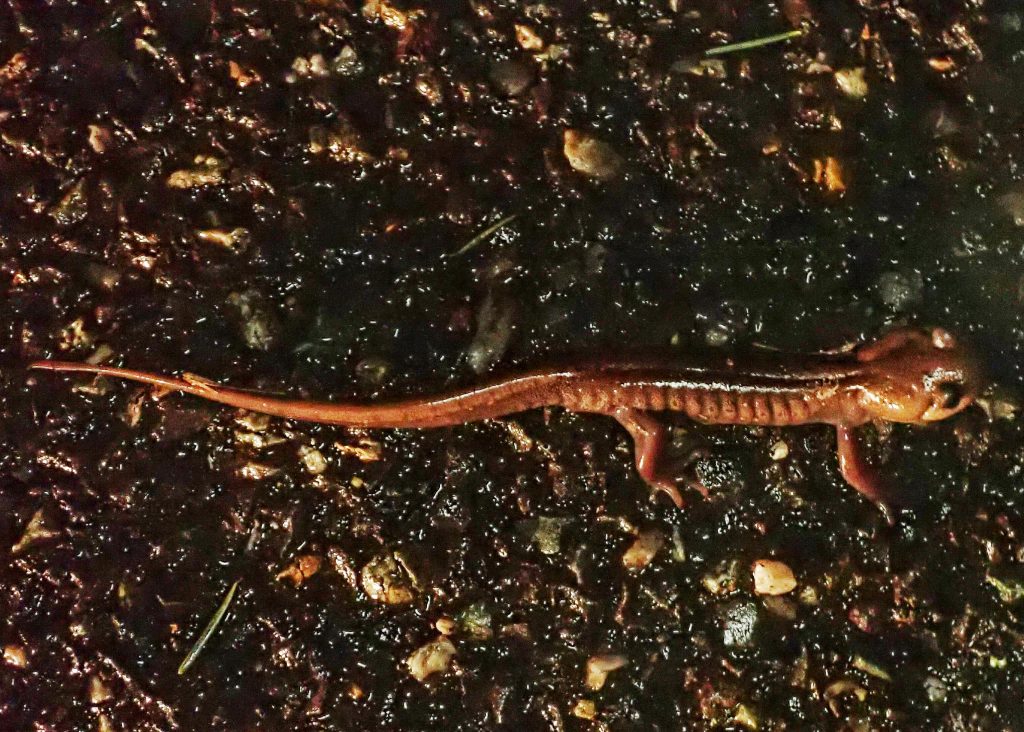
Ambystoma gracile has poison glands on its head, back, and tail, and will endeavor to wipe it onto its attackers. The substance is milky and drys quickly, but I cannot ascertain its chemical composition. It appears to be only mildly toxic, and may serve mostly to make them unpalatable, although Great Horned Owls have been observed to eat them willingly, and to suffer no ill effects. One hopeful thing for Northwesterns which may lose a limb but survive the attack is that they can, given enough time, regenerate the limb.
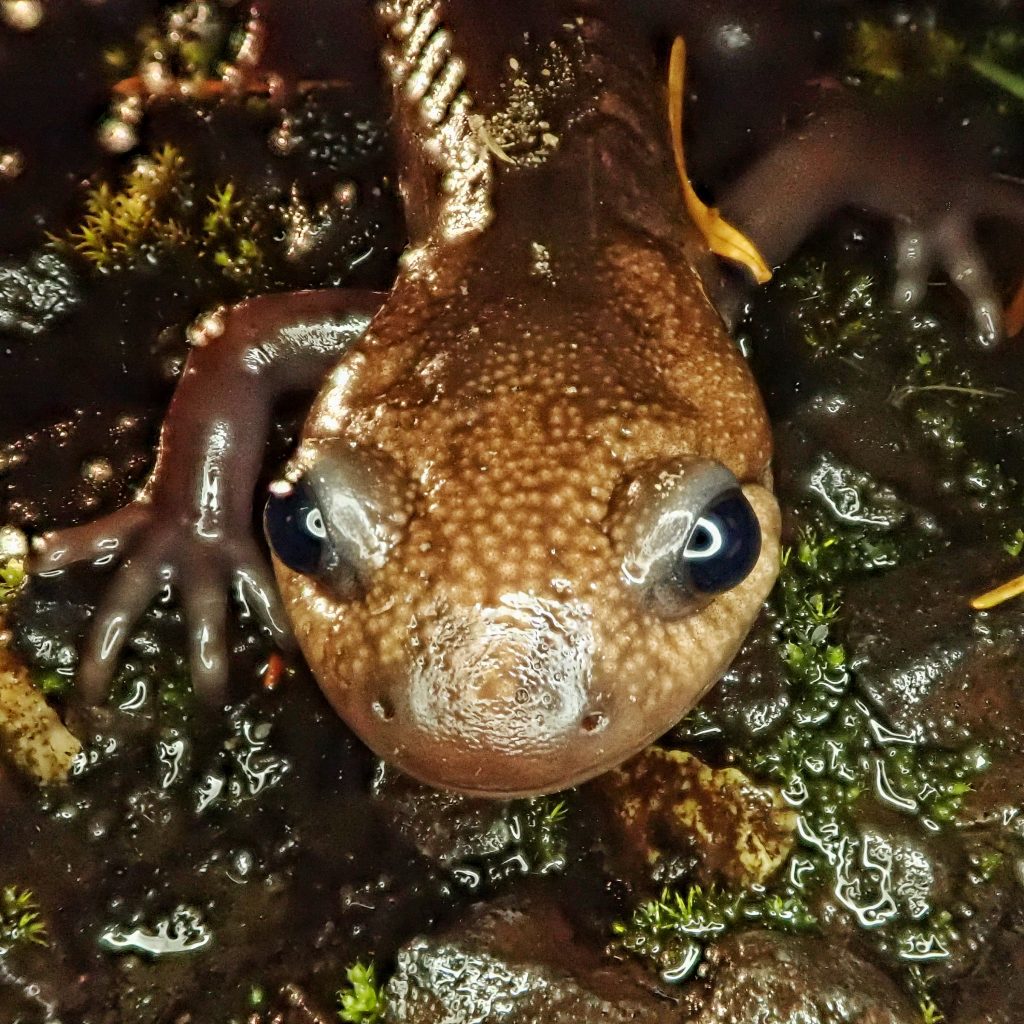
Description-Terrestrial and paedomorphic adults are similar, except for the presence of gills on the paedomorphs; Large, (up to 5” body, up to 10” including tail), brown to very dark grey, though slightly lighter at the parotoid glands, and at the poison glands located on the back and tail; sometimes has yellow or white flecks, and even spots, in northern populations; large, bulging brown eyes; obvious costal grooves, giving it an ‘undernourished’ appearance.
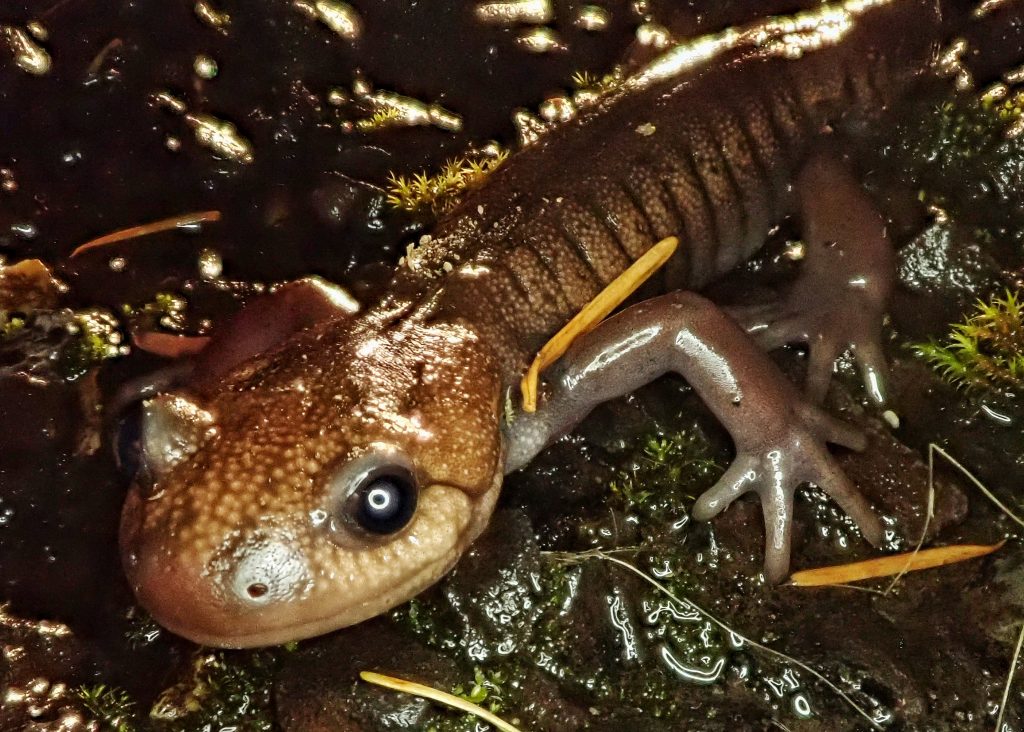
Similar species– A. macrodactylum (Long-toed Salamanders), have the eponymous long middle toe, are smaller, and usually have a dorsal stripe; Dicamptodon tenebrosous (Coastal Giant Salamander) has at least some mottling on the head, lacks prominent parotoid glands, and lacks obvious costal grooves.
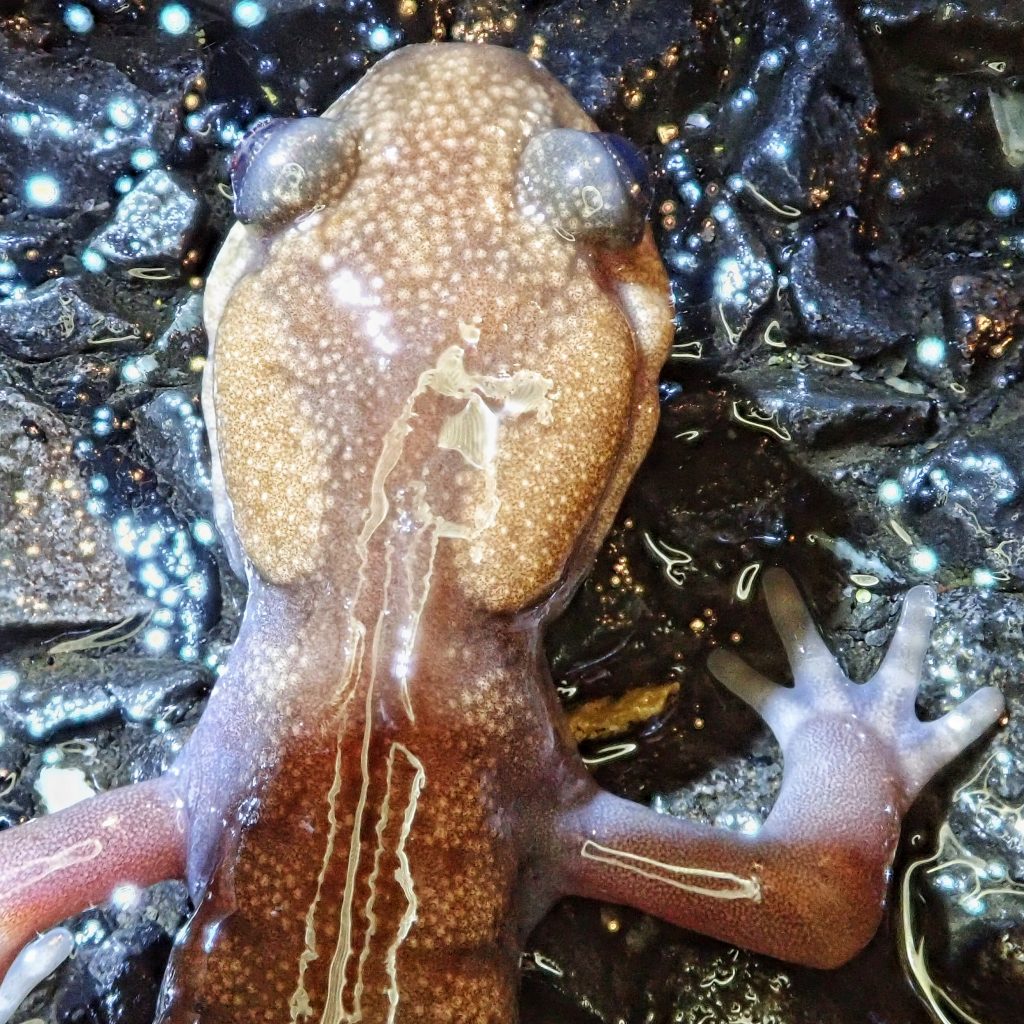
Habitat– Moist to mesic mixed deciduous/conifer forests with abundant downed wood, and with access to still or slow water; found up to 6500’ elevation.
Range-Pacific coast endemic; Found west of Cascades in our region.
Eats-Other amphibians and their eggs, aquatic and terrestrial invertebrates.
Eaten by– Trout and char prey on the larvae, as well as dragonfly larvae, predacious diving beetle (Dytiscidae), bullfrogs and turtles. Herons, egrets, raccoons, and garter snakes also prey on adults.
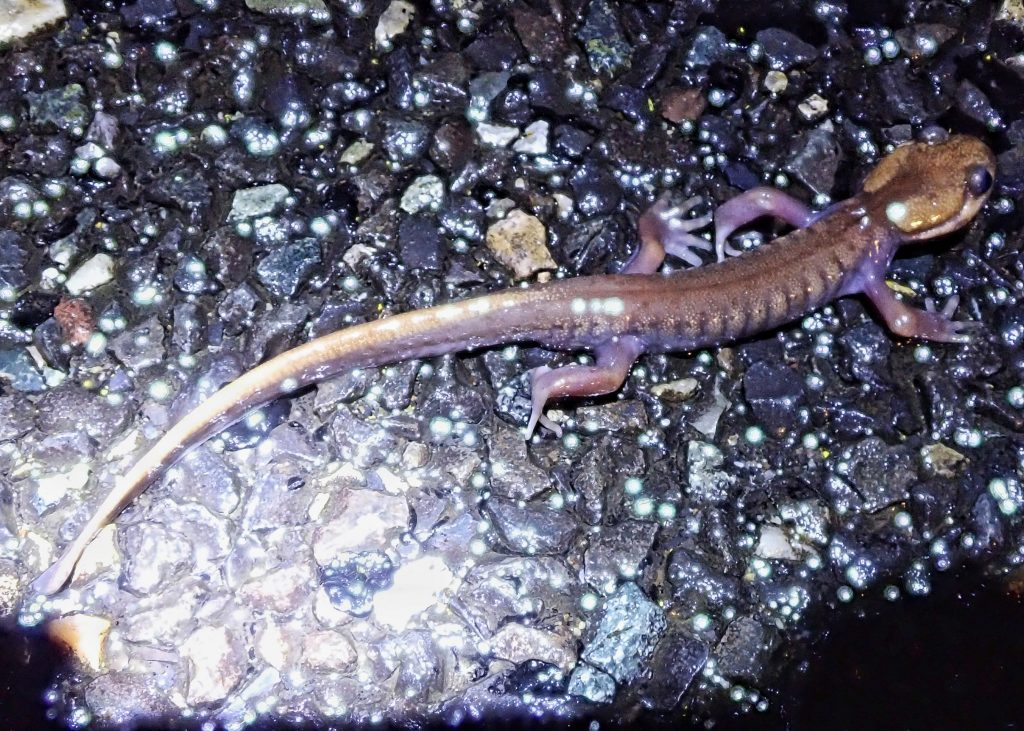
Reproduction-Breeding happens in lakes, ponds, slow streams, and wetlands, as early as February at low elevations, and as late as July in the mountains; egg masses are attached to thin stemmed aquatic vegetation 2-8” below the surface; eggs take 2-9 weeks to hatch, depending on water temperature ; there is no parental care.
Adults active– Year around, but often under leaves and logs, and usually below ground during warmer and colder times, a family trait which has earned this group the common name of mole salamanders.
Etymology of names– Ambystoma comes from Greek and translates roughly as ‘spouted cup mouth’, which hasn’t made sense to many biologists. It has been proposed that Tschudi actually meant ambly- stoma, which would translate as blunt mouth, but he gives no explanation. The specific epithet gracile means ‘slender/delicate’ in Latin and presumably refers to the rather undernourished look of even very healthy members of this species.

http://www.californiaherps.com/salamanders/pages/a.gracile.html
https://animaldiversity.org/accounts/Ambystoma_gracile/
https://www.centralcoastbiodiversity.org/northwestern-salamander-bull-ambystoma-gracile.html
https://en.m.wikipedia.org/wiki/Northwestern_salamander
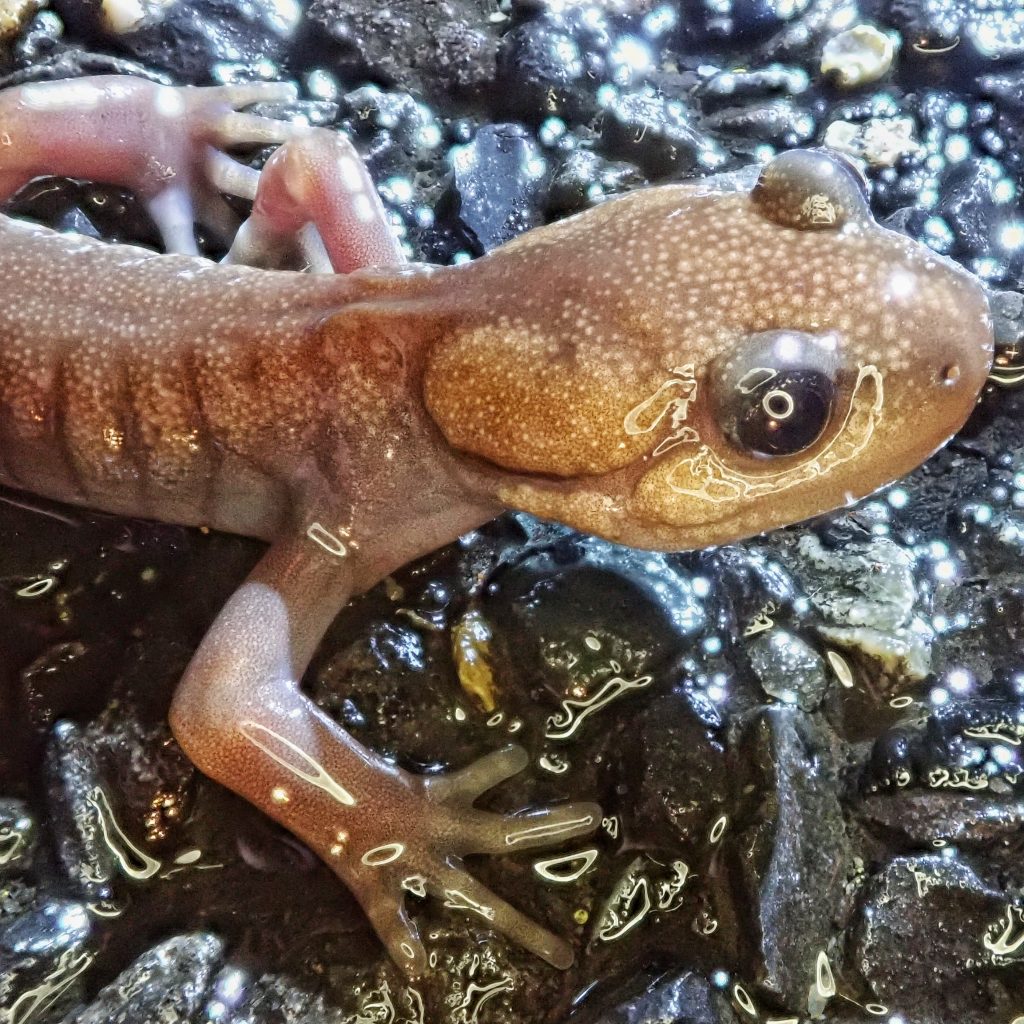
How did you manage to make them look so darn cute?!
They do that on their own!
May I share this with the FB group ‘Flora and Fauna in Oregon and Washington’ ? They are having a conversation about an egg mass and most believe it is Northwestern Salamander .
Well, I posted it there a couple days ago, but feel free to repost any of these anywhere.